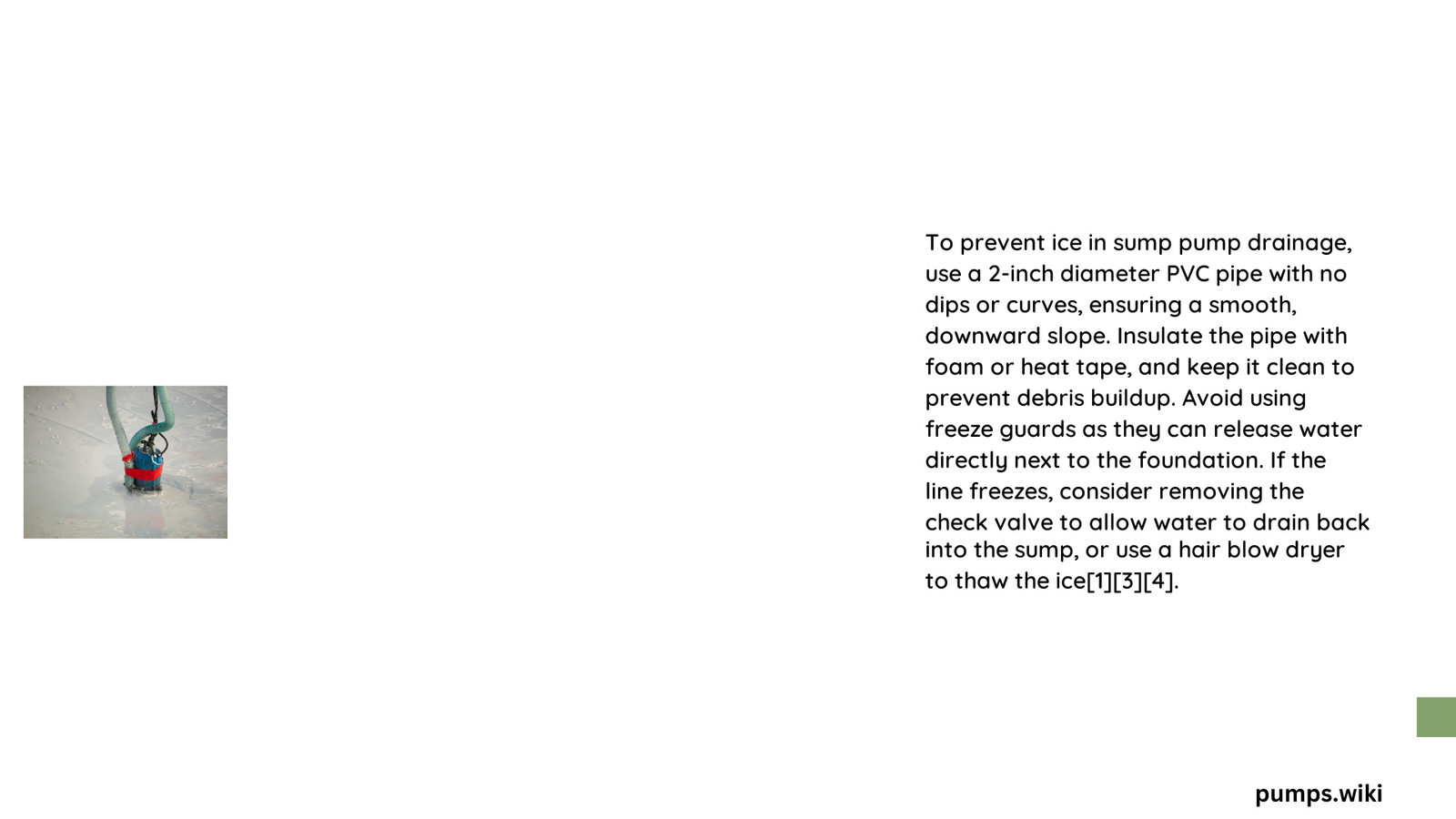Ice in Sump Pump Drainage: Comprehensive Prevention and Resolution Strategies
Winter presents unique challenges for homeowners managing sump pump systems, with ice formation in drainage lines posing significant risks of water damage and system failure. Understanding the complex dynamics of ice formation, temperature thresholds, and strategic prevention techniques becomes crucial for maintaining an effective drainage infrastructure during freezing conditions.
What Causes Ice Formation in Sump Pump Drainage?
Ice in sump pump drainage occurs when water in discharge lines encounters temperatures below 32°F (0°C). Several critical factors contribute to this phenomenon:
- Temperature Conditions
- Ambient temperatures dropping below freezing point
- Prolonged exposure to cold environments
-
Inconsistent heat distribution around drainage lines
-
Moisture Accumulation
- Stationary water in discharge pipes
- Excessive groundwater infiltration
- Snow and ice melt increasing water volume
How Can Homeowners Prevent Drainage Line Freezing?
Strategic Discharge Line Design
| Design Element | Recommended Specification | Purpose |
|---|---|---|
| Pipe Diameter | 1.5 – 2 inches | Optimize water flow |
| Discharge Distance | Minimum 20 feet from foundation | Prevent water pooling |
| Pipe Slope | Downward gradient | Ensure continuous water movement |
Insulation Techniques
- Underground Installation
- Bury discharge lines below frost line
- Use soil as natural insulation
-
Maintain consistent pipe depth
-
Protective Materials
- Install freeze-resistant hoses
- Apply thermal wrapping
- Use hay or protective tarps for additional coverage
What Are Effective Thawing Methods?
- Portable Heating Solutions
- Direct heat application
- Controlled temperature management
-
Rapid ice dissolution
-
Professional Intervention
- Specialized thawing equipment
- Comprehensive system assessment
- Minimal risk of pipe damage
What Are Potential Risks of Unaddressed Ice Buildup?
- System Failure
- Pump motor strain
- Potential electrical damage
-
Reduced operational efficiency
-
Water Damage Risks
- Basement flooding
- Foundation moisture infiltration
- Potential structural compromise
Cost Considerations for Ice Prevention
DIY Prevention Methods:
– Insulation materials: $50 – $150
– Portable heaters: $30 – $100
– Protective covers: $20 – $75
Professional Services:
– Inspection: $100 – $250
– Complete system winterization: $300 – $600
Maintenance Recommendations
- Annual Inspections
- Check discharge line integrity
- Verify slope and insulation
-
Test pump functionality
-
Seasonal Preparation
- Clean intake screens
- Remove debris from surrounding areas
- Verify drainage path clearance
Expert Tips for Long-Term Protection
- Implement consistent monitoring
- Invest in quality insulation materials
- Consider professional annual assessments
- Upgrade to modern, cold-resistant sump pump systems
Conclusion
Proactive management of ice in sump pump drainage requires a comprehensive approach combining strategic design, preventive techniques, and regular maintenance. By understanding potential challenges and implementing robust solutions, homeowners can effectively mitigate winter-related drainage complications.

